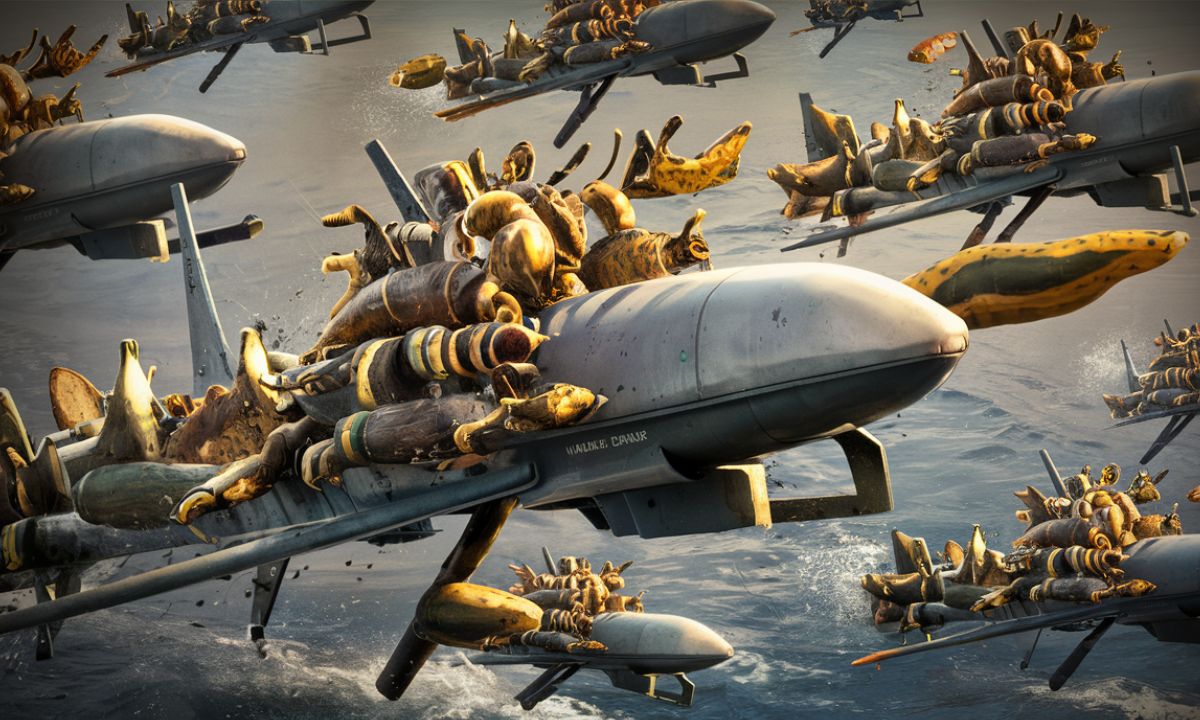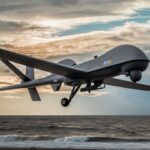The evolution of modern warfare is now deeply intertwined with cutting-edge technological advancements. A perfect illustration of this is Ukraine’s strategic deployment of the Magura V5 sea drone, which has recently received a significant upgrade: a swarm of decoy drones designed to overwhelm and outsmart enemy defenses. As the war between Ukraine and Russia continues to reshape global military doctrines, the integration of unmanned systems is revolutionizing naval combat.
Magura V5: An Overview
The Magura V5, short for Maritime Autonomous Guard Unmanned Robotic Apparatus, is an advanced Ukrainian unmanned naval system developed to perform both offensive and reconnaissance missions in contested maritime environments. With a low radar signature and autonomous navigation, it represents the epitome of stealth and precision.
This stealth naval drone can travel long distances, evade obstacles, and lay naval mines, all without human intervention. Its streamlined design makes it almost invisible to traditional radar systems, giving it a deadly advantage over larger, manned naval vessels.
The Power of Decoy Swarms
In its latest evolution, the Magura V5 is now equipped with a sea drone decoy swarm—a tactic that multiplies its effectiveness. These decoys are launched simultaneously with the primary drone, confusing and saturating enemy detection systems. This tactic mirrors the logic of anti-ship drone Ukraine innovations, where the idea is not only to attack but to mislead and drain enemy resources.
This approach increases the success rate of the Magura V5, allowing it to deliver its payload or ramming attack more efficiently. The decoy swarm acts like chaff but with intelligent navigation—changing the dynamics of drone missile strike operations.
Missile Integration: The R-73 Upgrade
One of the most game-changing enhancements to the Magura V5 is its integration with the R-73 air-to-air missile. Traditionally a missile used by fighter aircraft, the R-73’s addition to a sea drone opens new possibilities. This development enables the drone not only to target ships but also to defend itself against or even proactively engage enemy aircraft.
In one reported instance, the drone successfully neutralized two Russian helicopters and significantly damaged another. This surprising turn of events emphasizes the strategic edge provided by naval drones with air defense.
Features of the R-73 Missile
| Feature | Description |
| Range | Up to 40 kilometers |
| Warhead Weight | Approximately 8 kg |
| Guidance System | Modernized with wide-angle detection |
| Target Types | Aircraft, helicopters |
| Launch Capability | Autonomous, integrated with Magura V5 |
This adaptation turns the drone into a multi-dimensional threat, redefining the utility of unmanned surface vessels (USV) in battlefields.
Group 13 and Tactical Innovation
The credit for the operational success of the missile-armed Magura V5 goes largely to Group 13 Ukrainian forces, a specialized unit known for its tactical ingenuity. These operators have shifted from passive avoidance of air threats to aggressive engagements.
A Group 13 commander noted, “We didn’t hide from aviation as usual; instead, we sought out encounters.” This marks a bold shift in how Ukraine defense innovation is executed on the ground (or sea). Their ability to quickly calculate and execute strikes showcases the evolving nature of modern naval combat.
Impact on the Russian Black Sea Fleet
Ukrainian officials have reported that Russian Black Sea Fleet losses due to sea drone attacks have surpassed $500 million. The Magura V5 is credited with a large portion of these damages. These figures underline the potency of small, unmanned units operating in a swarm or solo with strategic guidance.
Beyond just the Magura V5, the Sea Baby drone Ukraine is also playing a pivotal role. These drones are equipped with ballistic guidance sea drone systems and large-caliber machine guns, enabling them to engage both maritime and land-based threats.
The Kerch Bay Operation
One of the most dramatic uses of sea drones occurred in the Kerch Bay drone operation, where Ukrainian forces used the Sea Baby to directly engage Russian units with machine gun fire. The footage released by the Security Service of Ukraine not only confirmed the drone’s combat effectiveness but also highlighted the psychological impact on Russian forces.
This multi-layered use of drones is emblematic of modern naval combat technology. It’s not just about firepower; it’s about tactics, surprise, and adaptability.
Advantages of Autonomous Underwater and Surface Drones
The effectiveness of drones like the Magura V5 and Sea Baby lies in their autonomy. These autonomous underwater vehicles and USVs can navigate complex environments, evade traditional countermeasures, and execute precision strikes without risking human lives.
Their low production cost compared to manned naval platforms makes them a sustainable choice for long-term defense. As warfare continues to evolve, so does the need for flexible, cost-effective solutions like the Magura V5.
Final Words
The Ukrainian Magura V5 is not just another naval asset—it’s a symbol of how innovation can level the playing field against a more heavily equipped adversary. The drone’s upgrades, including its sea drone decoy swarm, missile integration, and autonomous capabilities, make it a formidable player in the evolving landscape of Ukrainian drone warfare.
As geopolitical tensions remain high, the continued development and deployment of systems like the Magura V5 and Sea Baby signify a strategic shift toward unmanned, smart warfare. These drones are redefining not only tactics but also the philosophy of combat, signaling a new chapter in the history of naval warfare.
FAQs
What is the Magura V5 sea drone used for?
The Magura V5 is used primarily for striking enemy ships and coastal targets. It can autonomously navigate, lay mines, and deliver precision attacks while avoiding detection due to its low radar signature.
How do decoy drones assist the Magura V5?
Decoy drones help by overwhelming and confusing enemy radar and defense systems, allowing the primary drone to carry out its mission with a higher chance of success.
Can the Magura V5 engage aerial targets?
Yes, with the integration of the R-73 air-to-air missile, the Magura V5 can engage helicopters and other low-flying aircraft, expanding its role beyond maritime attacks.
What are the key features of the R-73 missile used by the Magura V5?
The R-73 has a range of up to 40 km, a warhead of approximately 8 kg, and a modern guidance system that allows it to lock onto fast-moving aerial targets quickly and accurately.
What other drones are Ukraine using besides the Magura V5?
Ukraine is also using the Sea Baby drone, which is equipped with large-caliber machine guns and automated targeting systems. It played a key role in operations like the one in Kerch Bay.

I m John Nicker a Content Writer and SEO Expert with 5 years Experiness. I have Already work on BBC News Website.
















